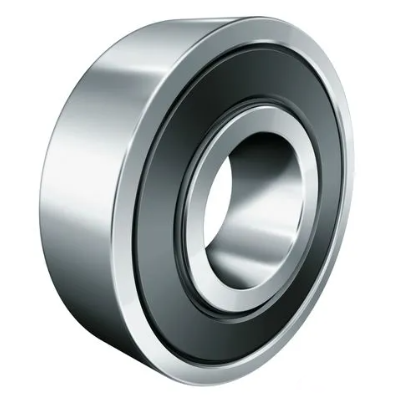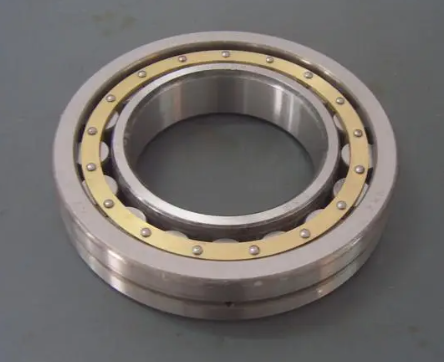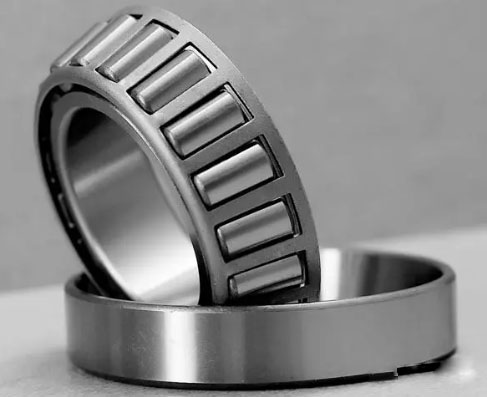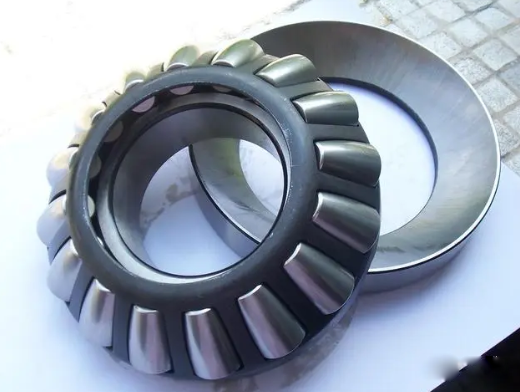The types and selection calculations of bearings are all here
2023.11.24
1.Types of bearings
Bearings are an important component in mechanical engineering, widely used in various mechanical equipment, such as mechanical equipment, machine tools, automobiles, motors, etc. There are various types of bearings, and according to different application scenarios and performance requirements, bearings can be divided into various types, such as deep groove ball bearings, cylindrical roller bearings, tapered roller bearings, angular contact ball bearings, thrust ball bearings, and thrust roller bearings.
1. Deep groove ball bearing
Deep groove ball bearing is a type of bearing with a compact structure, low friction coefficient, and suitable for high-speed operation. Its characteristic is that the outer ring raceway is spherical in shape, with automatic centering performance, suitable for precision assembly of two or more units. Its structure is simple, easy to use, and it mainly bears radial loads, but can also withstand axial loads in any direction, with a wide range of applications.

2. Cylindrical roller bearings
Cylindrical roller bearings can provide high load-bearing capacity in both radial and axial directions, and are suitable for high-speed operation due to their low friction coefficient. Its characteristic is the ability to automatically adjust the center, which can withstand combined radial or axial loads, and can withstand large axial loads. It is suitable for applications where the axial size allows for large radial displacement and shaft tilt, as well as applications with high requirements for noise and rigidity.

3. Tapered roller bearing
Tapered roller bearings are suitable for bearing heavy and impact loads, precision instruments, rotating parts of high-speed machine tools, large motors, instruments, and gearboxes. Its characteristics are small friction coefficient, high limit speed, strong ability of bearing to withstand large loads, high requirements for machining accuracy of shafts or seat holes, and structural design with clearance adjustment mechanism, so it has centricity.

4. Angular contact ball bearing
Angular contact ball bearings can withstand both axial and radial loads simultaneously. It is suitable for high-speed rotation, high-precision rotation, transmission of large torque torque, and bearing vibration or impact loads caused by yaw under radial and axial loads. Its characteristic is that it has a combined axial and radial load capacity, suitable for bearing composite or radial loads, with low friction coefficient and high rotational speed, especially suitable for working conditions with high rotational speed and high impact loads.
5. Thrust ball bearing
Thrust ball bearings are rolling parts that support rotating shafts or individual components and maintain small clearance with them. Its characteristic is that it can withstand large loads, has a simple structure, works reliably, and has low starting friction, but can only withstand unidirectional loads.

6. Thrust roller bearing
The thrust roller bearing is composed of a thrust cylindrical roller or a tapered roller and an inner ring supporting the needle roller. The needle roller is paired with the needle roller or the guide sleeve between the cylindrical roller and the tapered roller is used in contact. Its characteristics are high load-bearing capacity, low friction coefficient and temperature rise, and ability to adapt to higher rotational speeds and temperatures.

2、 Bearing selection principles
When selecting bearings, it is necessary to choose the appropriate bearing type based on the specific usage environment and conditions of the equipment. Generally speaking, the following principles should be considered when selecting models:
1. Load nature and size: Select the appropriate bearing type based on the actual force situation of the equipment. Generally speaking, deep groove ball bearings and thrust ball bearings are suitable for bearing radial loads, while angular contact ball bearings are suitable for bearing comprehensive loads.
2. Speed: Different bearing types have different restrictions on speed. Generally speaking, deep groove ball bearings and cylindrical roller bearings are suitable for high-speed operation.
3. Centering: For equipment that requires automatic centering function, tapered roller bearings or angular contact ball bearings can be selected.
4. Noise and vibration: For equipment with high requirements for noise and vibration, bearing types with good quietness and low vibration can be selected.
5. Lubrication method: Select a suitable lubrication method based on the lubrication conditions and requirements of the equipment. Generally speaking, grease lubrication is suitable for equipment with relatively closed environments, while oil lubrication is suitable for equipment with relatively open environments and easy replenishment.
6. Material selection: The selection of materials for the inner and outer rings of bearings, rolling elements, and cages is also very important. Choosing appropriate materials based on the actual working environment and requirements of the equipment can extend the service life of bearings and improve their reliability.
3、Summary
In summary, there are various types of bearings, each with its unique performance and application scenarios. When selecting bearings, it is necessary to choose the appropriate bearing type based on the actual usage environment and conditions of the equipment. Generally speaking, when selecting a model, factors such as load nature and size, rotational speed, centricity, noise and vibration, lubrication method, and material selection should be considered. The correct selection can ensure the normal operation and service life of the equipment, so the issue of bearing selection cannot be ignored.
Previous:10 points of experience sharing summarized by foreign mechanical engineers
Next:I have seen the beauty of the wiring, and come to see the beauty of the installation project!
Related Information
- Industry news
- The tap or drill bit breaks in the hole, how to fix it?
- Why do airplanes use rivets instead of welding?
- Why are engineering drawings all blueprints?
- How is a ping pong ball made? It turns out that it is made of two pieces of plas
- What to do if quality is abnormal? Doing these 3 things well is the key!
- Weekly News 9.7-9.13
- Huawei's three-fold screen is approaching, and the domestic supply chain is wait
- Innovative application of digital twin technology in integrated die-casting prod
- 5 types of carbide cutting tools, what are the differences? Save this article an
- Global manufacturing PMI in June was 49.5% | Weekly News 7.6-7.12
- Raw material defects | Machining special operations and practical cases 109
- No wonder Toyota stamping is so good: a day in the life of a Toyota stamping sho
- Analysis on the development trend and demand of China's mold industry
- How many types of sealing rings are there in machinery? What are they used for?
- Hangfa, Hangfa, a scar on the hearts of machine processing workers
- How to mill a large arc surface with a small cutter?
- Dynamics of the processing center of the process! What is the fundamental reason
- 500 ° C ultra -strong aluminum alloy! This problem is overcome
- How much do you know about the hometown of machine tools and molds, how much do

 BACK
BACK MT HOME
MT HOME Navbar
Navbar